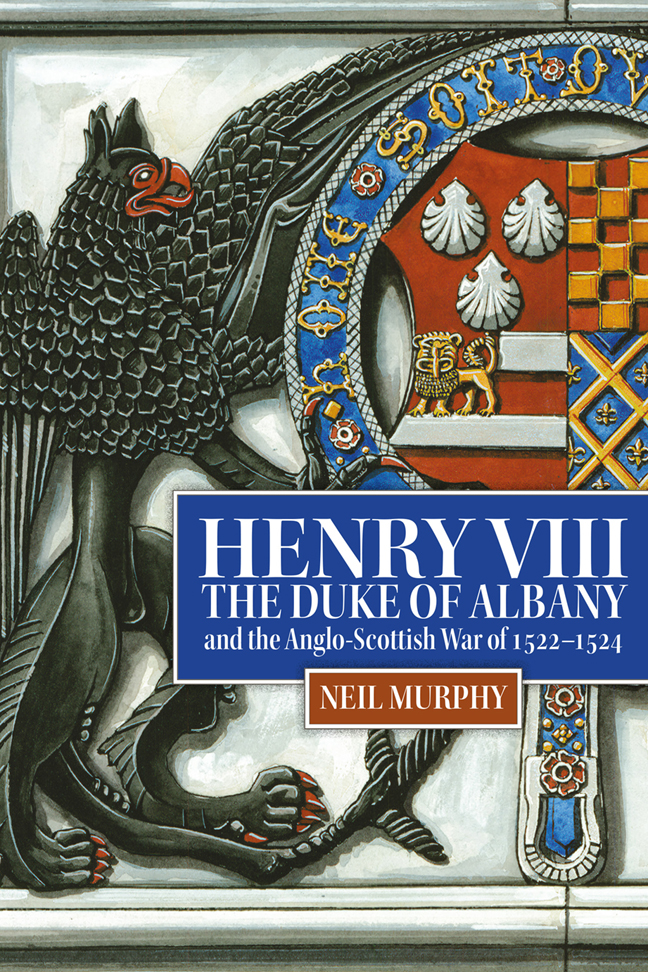Book contents
- Frontmatter
- Dedication
- Contents
- List of Maps
- Acknowledgements
- List of Abbreviations
- Glossary of Selected Scots Words and Terms
- Introduction
- 1 Albany's Return to Scotland to the Sack of Jedburgh (November 1521–September 1523)
- 2 Albany's March on Wark to the Treaty of Berwick (September 1523–January 1526)
- 3 Military Mobilisation in Scotland
- 4 The Supply of Scottish Armies
- 5 The Destruction of the Scottish Borders
- 6 The Defence of the English Frontier
- 7 Spies and Informers
- Conclusion
- Bibliography
- Index
7 - Spies and Informers
Published online by Cambridge University Press: 10 January 2024
- Frontmatter
- Dedication
- Contents
- List of Maps
- Acknowledgements
- List of Abbreviations
- Glossary of Selected Scots Words and Terms
- Introduction
- 1 Albany's Return to Scotland to the Sack of Jedburgh (November 1521–September 1523)
- 2 Albany's March on Wark to the Treaty of Berwick (September 1523–January 1526)
- 3 Military Mobilisation in Scotland
- 4 The Supply of Scottish Armies
- 5 The Destruction of the Scottish Borders
- 6 The Defence of the English Frontier
- 7 Spies and Informers
- Conclusion
- Bibliography
- Index
Summary
Spying played a key part in English military efforts against the Scots in the early 1520s in terms of both defence and offence, especially when Thomas Howard, earl of Surrey, took overall command of the war in early 1523. Surrey gathered as much information as he could from a range of spies and informers about Scottish military preparations. Intelligence was crucial because Surrey had to defend the entire northern frontier, from Carlisle to Berwick, with limited resources. He analysed the reports he received and used them to make informed decisions about how best to deploy his soldiers. Surrey sought information on a wide range of issues, from details about the size of the Scottish army and the manner in which Albany had mobilised his men, to specific information about who commanded the various contingents, where they were located, how effectively they were supplied, what the weather conditions were like, and the quality of artillery they possessed. Surrey had to consider all these factors when preparing the defence of the north.
While looking at both kingdoms, this chapter will principally focus on English spying. It is clear that Albany also made use of spies and informers during the war of the 1520s, but unfortunately the Scottish sources detailing the use of intelligence during the conflict are limited. In contrast, the extensive English sources allow us to examine the networks of spies and informers which the Tudor crown employed during the war. Indeed, English authorities came to rely on long-standing spies whom they trusted to provide reliable information, such as Isabella Hoppringle, prioress of Coldstream, who spied for the English over the course of three decades. Espionage during this period was to a large degree focused on gaining the shortterm advantages crucial to counter the threat of foreign invasion. Certainly, although spies provided information to help English commanders prepare for their invasions of Scotland, the bulk of the intelligence gathering activities were focused on the defence of the frontier. In order to win these short-term advantages, it was necessary to put in place long-term systems to ensure that spies and informers were ready and in place to warn of any threats.
- Type
- Chapter
- Information
- Publisher: Boydell & BrewerPrint publication year: 2023

